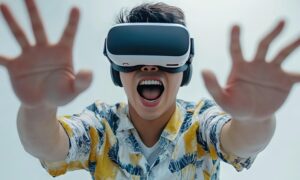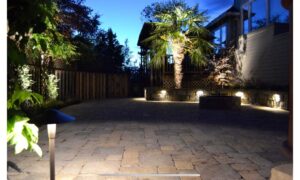Are you prepared to embark on a journey into the forefront of landscape design? Imagine immersing yourself in a virtual realm where you can witness your envisioned garden spring to life, or explore diverse architectural concepts even before they materialize. Thanks to the capabilities of Augmented Reality (AR) and Virtual Reality (VR), this notion has transcended fantasy and is rapidly transforming into reality. Within this article, we shall delve into the captivating realm of AR and VR within landscape design, unveiling their substantial potential and the revolutionary impact they bestow upon our perception of outdoor spaces. Prepare for an engaging voyage that will undoubtedly leave you enthused and inspired about the forthcoming innovations in the realm of landscaping!
Introduction to Augmented Reality and Virtual Reality
As we continue our exploration of novel technologies that facilitate the creation of stunning landscape designs, the significance of augmented reality (AR) and virtual reality (VR) must not be underestimated. While AR and VR have been in existence for some time, their integration into landscape design remains a relatively recent development. Nevertheless, these emerging technologies harbor considerable potential for those aspiring to craft genuinely distinctive and inventive designs.
Augmented Reality enables users to overlay digital elements onto the real world, providing a tangible preview of your landscape design before the construction phase commences. Conversely, Virtual Reality transports users into an entirely digital environment, facilitating the exploration of diverse design concepts or offering clients a virtual tour of their prospective landscapes.
Regardless of your chosen technology, AR and VR offer a distinct mode of experiencing landscape design. Should you seek to craft something profoundly exceptional, be sure to factor in the utilization of these emergent technologies.
Advantages of AR and VR in Landscape Design
Virtual and augmented reality constitute potent tools that landscape designers can harness to create immersive and captivating experiences for their clientele. VR facilitates the presentation of virtual tours for clients to navigate through their envisioned designs, while AR empowers them to witness the final outcome within their physical space. These technologies possess the potential to revolutionize the landscape design domain, rendering it more accessible and interactive than ever before.
The Enhancement of Landscape Design Through AR and VR Technology
AR and VR technology can revolutionize landscape design by offering immersive experiences. AR overlays designs on real landscapes, enhancing client understanding. VR creates virtual landscapes for interactive exploration, surpassing traditional 2D drawings.
Both AR and VR can significantly enhance the design process by adding interactivity, engagement, and efficiency. For instance, AR enables rapid testing of diverse design concepts on-site, negating the need for resource-intensive physical prototypes. VR can help by creating virtual walk-throughs of designs, letting clients experience the space before it’s built.
AR and VR tech offer landscape designers a powerful toolset to create authentic, immersive client experiences. These technologies possess the potential to significantly elevate both the efficiency and quality of landscape design undertakings.
Illustrative Projects Leveraging AR and VR Technologies
Project 1: Designing an Optimal Office Space
AR and VR can help create a detailed 3D office model, enhancing layout and furniture setup. By incorporating these technologies, architects can preplan the office space, ensuring it accommodates both employees and visitors with optimal efficiency.
Project 2: Crafting an Interactive Museum Journey
Museums can leverage AR and VR to forge interactive experiences for visitors. By overlaying digital information onto physical exhibits, museums create immersive and educational encounters. For example, the British Museum employs AR to transport visitors into Egyptian tombs, obviating the need for physical travel.
Project 3: Elevating Product Design and Development
AR and VR prove invaluable in product design and development, yielding prototypes or mockups for testing before manufacturing commences. This ensures alignment with customer needs and aids in identifying potential issues before production. During the design phase, AR and VR aid engineers in preemptively detecting product flaws.
Project 4: Revolutionizing Training and Education
AR and VR contribute to immersive training and educational experiences. Military training scenarios employ VR to prepare soldiers without exposing them to actual danger. In educational settings, AR fosters interactive learning, enhancing student engagement.
Challenges in Integrating AR and VR Technologies into Landscape Design
Although AR and VR technologies are gaining traction within landscape design, several challenges persist in their seamless integration. Developing accurate and lifelike 3D landscape models poses a significant hurdle, often necessitating specialized software and hardware. Achieving a seamless AR or VR experience in landscape design involves overcoming challenges like software selection and compatible headset usage.
Additionally, training design personnel to proficiently deploy and integrate AR and VR technologies necessitates time and resources. Investing in staff training becomes crucial for landscape design firms seeking successful technology implementation.
Conclusion
The potential of augmented reality and virtual reality within landscape design is boundless. AR provides real-time design insights in designated spaces, while VR allows exploration before physical creation. Collectively, these technologies empower designers to conceive exceptional landscapes that seamlessly blend aesthetics with functionality. As applications grow, we expect innovative uses of these tools, driving us toward an immersive future for landscape design.



































